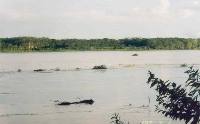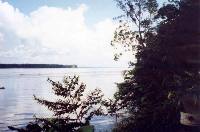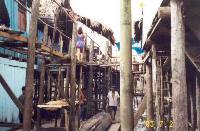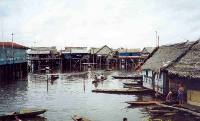
Click images to enlarge
My husband Guillermo, as a member of PAMS (Peruvian-American Medical Society), was invited to join that group to give a talk about his latest work during the mission of these doctors. Let me offer a short account of what that is all about. During the 60s and 70s, due to the political and economical situation in Peru, lots of professional people left and amongst them is a large group of doctors who settled mainly in the U.S. I was told there are approximately 3,400 of them scattered in different states in the north. We live in Venezuela.
These doctors go yearly to Peru to a different location with a "mission" as they call it. They contact the health authorities and hospitals many months ahead and plan an intensive program during the two weeks they are there. Most of these Peruvians (by now also with U.S. citizenship) have attained high positions in their respective hospitals and universities and they come with medical staff, medicines, equipment which is then donated and do an incredible job. I talked to one of the surgeons who had performed 87 interventions in 4 days, leaving the hotel before 7 am and returning way after midnight.
In 2003, all of this took place in Iquitos, a small city (300,000 population), which lies on the Amazon River and is only accessible by water or air, an hour and a half by plane from Lima. Iquitos was founded in 1757 by Jesuits, although a fellow called Orellana had already sailed in those water 200 years before. The whole region became very famous during the rubber boom. The arrival of the rubber barons produced a long period of luxury and ostentation. Little remains of that nowadays except for the "iron house" designed by Gustaf Eiffel, yes that one, who had it built in France and shipped to Iquitos where it was assembled and still stands today, housing some minor shops at street level and a restaurant upstairs.
 |
|
 |
Iquitos, being about the biggest settlement at the start of the river, well, lots of rivers and effluents coming down from the Andean range and all the water from the meltdowns of the snows up high, is really a city geared towards water, not land. And let me tell you, there is so much water all around, not only under your feet but also coming from above because it rains a lot, short bursts which last 5 to 10 or more minutes and then again a lovely sunshine.
Although we have our jungle and Orinoco River in Venezuela, the Amazon and its surroundings are so majestic that only seeing it can one understand finally that it is the lungs of the earth. Many Indian tribes live in the surrounding forests, some of them settled in the small towns near Iquitos and in Iquitos itself, mainly in an area called Belen (not to be confused with Belem, at the mouth of the Amazon in Brasil). Belen, as you can see from the photos, is a settlement on the shore of the river and a little further in on the river itself where the people have built their homes on rafts which are then tied all together so as to not float away when the river is high and the currents strong.
 |
 |
 |
Due to the insecurity we were told not to venture there by ourselves so, with a guide, we explored that township where roughly about 80,000 to 100,000 people live. Their shacks are on stilts and all excess is thrown down, and I mean all excess! It is a poor and miserable place with poverty and diseases galore. A large number of the people live similarly but on the river itself. They have schools, churches, floating "restaurants" (their food smelt great and is served not on plates but on banana leaves and eaten by hand, with a different menu daily!) The "restaurant" is a man or a woman in a small canoe with pots and pans and a small gas fire on which the food is cooked. This should be all right except water is drawn from the river which would be quite contaminated.
 |
< A floating restaurant with a river bus behind it The purple potato variety > |
 |
I tried the local foods though in regular restaurants and
it is great. The Amazon has plenty of fish and the best I have
ever eaten is a fish they call Paiche. It apparently only lives
in the Amazon. It is a huge fish which can weigh up to 300 pounds
or more, soft, white and almost melting in the mouth. I also
had Dorado which I believe is known as catfish. It is also very
good and tasty. All these dishes of course are accompanied by
the various sauces and spices common in Peru which are glorious.
Then there are various fruits I had never eaten before and which
were also tasty, as well as a variety of potato which is mauve-purple
in color, inside and out. Accompanying our first meal in Iquitos,
we were served a plate with a big serving of some white thin
ribbons, along with avocado, tomato and a sauce made out of a
fruit a bit similar to passion fruit with tomato and hot peppers.
Well, these ribbons were fresh heart of palm. I had never tasted
fresh palm so this was a surprise and, although quite innocuous
in taste all by itself, it sort of grows on you once you eat
it more than once. The vegetables, fruits and other forest produce
are all brought in from around Iquitos, traded through the people
who live in Belen who then bring it up to the city.